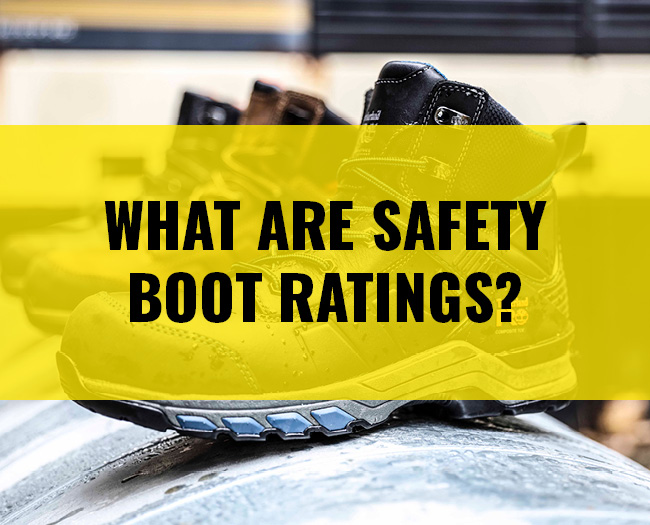What do the safety codes mean?
On all of our boot listings, you will see a section for safety rating followed by some letters and numbers that probably don’t mean much to you. However these are the most important thing to be looked at when selecting your boots to ensure you are well protected.
Boot ratings can be broken down into 3 categories, basic requirement, additional features & slip resistance ratings.
Basic requirements
| SB | Impact & compression resistant toe cap to 200J (The materials of these toe caps can vary but all provide resistance to at least 200 joules of force) & oil resistant outer sole – the minimum requirement for all boots |
| SBP | The Same as SB + midsole for underfoot penetration resistance |
| S1 | The same as SB + anti-static properties and enclosed energy absorbing heel |
| S1P | The same as S1 plus midsole for underfoot penetration resistance |
| S2 | The same as S1 + water resistance |
| S3 | The same as S2 + midsole for underfoot penetration resistance |
| S4 | The same as S1 + fully waterproof |
| S5 | The same as S4 + midsole for penetration resistance |
So essentially, SB is your minimum grade of safety, and after this you will need to pick boots with the features you require from antistatic properties to being waterproof.
Additional Features
| SBH | Class II waterproof polymer & leather upper |
| HRO | Resistance to high 300 degree heat for 60 seconds |
| E | Heel energy absorption to 20J |
| P | Penetration resistant to 1100 newtons |
| CI | Insulation against cold (tested for 30 minutes at -20 degrees) |
| HI | Insulation against heat (tested for 30 minutes at 150 degrees) |
| WRU | Water resistant upper (not used on all water resistant footwear) |
| CR | Cut resistant |
| AN | Ankle protection |
| ESD | ESD footwear is designed for the electronics and explosives industry and has to meet ESD CEI |
| EN | 61340-5-1 standard |
| FO | Resistance to oil |
| A | Antistatic |
Whilst these features aren’t seen as often, certain boot manufacturers will produce more specialist boots and these additional features could be vital to your job.
Slip Resistance
| SRA | Tested on ceramic tile wetted with dilute soap solution |
| SRB | Tested on smooth steel contaminated with glycerol |
| SRC | Passed both SRA & SRB tests |
Another feature that could be important to your job, boots that have passed specific slip resistance testing will display one of these 3 codes.
Now hopefully you’ll have a better understanding of the fundamentals of what makes your boots safe. The rest comes down to preference! Varying materials can affect the look and feel of your boots, from tough high grade leather to breathable mesh linings.
Traditional steel toe caps to lightweight PVC midsoles. There are hundreds of options and styles to suit your taste, however, the correct safety requirements should always be met before picking your perfect pair of new shoes!
And there you have it, you now know all you need to know to correctly pick the right pair of boots for you! And if you don’t our team of experts are always on hand to answer any questions you may have.

